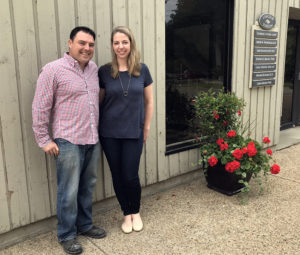As the “town educators” group (we spoke at the April 25 School Building Committee Meeting), we wanted to offer a few thoughts before the upcoming June 9 vote. We see the opportunity for our town’s children to benefit enormously from choosing either school option C or L3. Here is why:
As we survey the educational landscape, we see a world of learning that is becoming increasingly dynamic, interconnected, and flexible. If schools of the past have been labeled as egg crates—every classroom of equal size with teachers and students isolated from one another—schools of the future (and leading schools today) have rooms of varying sizes and purposes—rooms that are separate but also can be connected.
Leading school models today have small breakout rooms, large rooms that can accommodate projects, maker spaces and engineering labs, and, most of all, flexible spaces that can be converted to a variety of different uses. These schools also seek to create beautiful as well as functional spaces—many have an abundance of natural light and use warm touches (couches, bean bag chairs, rugs, lamps) to try to combat the institutional feel of most schools and to enable informal work spaces.
With those criteria in mind, from an educational vantage point we think that either C or L3 are viable options. Both provide hub spaces to carry out a forward-looking educational vision, and both include smaller breakout rooms as well as larger spaces for project-based work. C is potentially the most flexible option; with new construction and a compact design, there are lots of opportunities to design in forward-looking ways. At the same time, we also see advantages to L3: potentially more natural light and a more seamless connection of all parts of the building to the natural surroundings, Hallways can, if well-designed, be places for displaying high-quality student work and can include couches, nooks, and places for students to work and otherwise be part of a 21st-century design.
In contrast, R, L1, and L2 do not offer this flexibility, and thus do not meet the demands of 21st-century education.
We also see the new building as an opportunity to rethink education in forward-looking ways. It is true, as many citizens have noted, that good learning can happen anywhere; one of us can remember teaching in a converted storage closet. However, educational expectations have changed and will continue to evolve in response to our changing world. As responsive citizens, we hope to provide the kind of learning that equips our students for a 21st-century world, whether that be through differentiated instruction to meet the needs of all learners or through activities that foster adaptability, hands-on learning, problem solving, innovation, initiative, teamwork, and self-awareness. The goal should be to create spaces that facilitate powerful and up-to-date learning and teaching, not inhibit it.
The opportunities these spaces provide should be paired with opportunities for teachers to learn how to take advantage of the new design. One approach, encouraged by some of our colleagues, would be to set aside 0.5 percent of the budget to support teachers to learn how to use the new spaces well. In our case, we already have a significant amount of professional development time that could be used for these purposes and a leadership team committed to a forward-looking educational vision. We are excited by the combination of the people, space, and time, and expect our town’s children will be the beneficiaries for decades to come.
As citizens, we recognize the enormous cost of the project and urge the town both to continue to find ways to mitigate or defer the costs of the project for those on fixed incomes or those unable to pay. This might include tax deferment options or the creation of a hardship fund. Our job as a community is to find a way to develop a school that prepares the next generation of learners and leaders and also works for all of our residents. At the same time, we do not think it is wise to put a huge sum of money into what is essentially yesterday’s school model.
We appreciate the opportunity to weigh in and look forward to the discussion on Saturday.
Sincerely,
Jal Mehta, Jen Holleran, Liz City, Cathie Bitter, and Mia Chung-Yee



